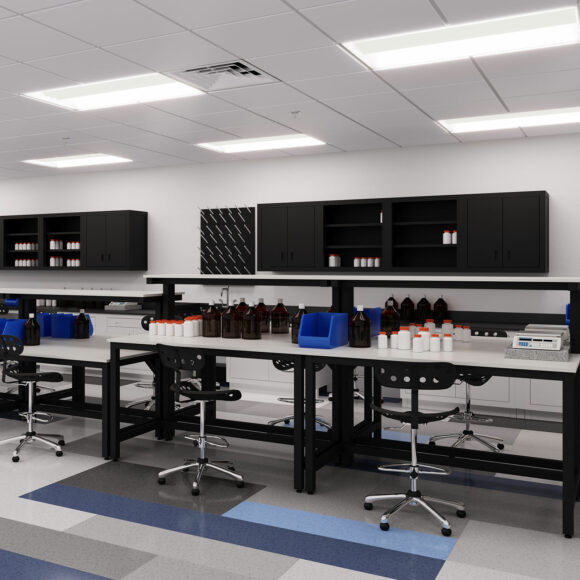The fourth Global Plastics Treaty negotiations (INC-4) held in Ottawa, Canada, in April 2024 Produced a Mixed Outcome
Given all the breaking news stories in the last few months, perhaps you were not aware that member countries of the United Nations came together in April to negotiate a new Global Plastics Treaty.
Advocates of a global treaty argue that plastic pollution is a worldwide problem and that it will take an international binding agreement to slow (or hopefully reverse) the damage that plastics (especially microplastic pollution) are causing to our oceans and the human food chain that we depend upon.
Proponents of a strong treaty not only wanted to address problems of single-use plastics but also to place overall limits on the production of plastic polymers, including the phase-out of what they described as dangerous PVC, polystyrene, and polyurethane plastics, while severely restricting the high-volume manufacture of polyethylene, polypropylene and PET plastics most associated with environmental plastic pollution. Such an agreement would reduce the use of plastic polymers by 40% between 2025 and 2040.
The seven days of negotiations in Ottawa resulted in two major decisions that disappointed these environmental advocates.
The first was a major decision by UN delegates to limit the scope of the treaty to downstream plastics pollution only rather than consider the full lifecycle of fossil fuel-derived polymer production, downstream plastics production, and distribution.
The second decision was to kick the proverbial negotiations can down the road. Environmental advocates had hoped a binding treaty could be ratified during the Ottawa sessions. Instead, there was an agreement to complete this by the end of 2024, presumably at the fifth Global Plastic Treaty negotiations to be held 25 November – 1 December 2024 in Busan, South Korea.

New Research Indicates that Much Less Plastic gets Recycled than we Thought
Given the depressing amounts of plastic that end up in the oceans, as evidenced by the Great Pacific Garbage Patch – a slow-spinning gyre of primarily junk plastic circulating in the Pacific that’s so large it can be seen from space – it may not surprise you that researchers have recently published a study that much less plastic get recycled than you might think.
This report, from the Center for Climate Integrity, is a blistering takedown of the plastic industry’s efforts to promote a virtuous “circular” life cycle of plastic production and recycling, calling the industry’s claims of successfully recycling enough plastic a fraud.
That’s a pretty extreme claim.
But they may have a valid point about the small amount of plastic that gets recycled.
The U.S. Department of Energy’s (DOE’s) National Renewable Energy Laboratory (NREL) estimates that in 2019, only 5% of plastic in the U.S. was recycled, with 86% buried in landfills and the remainder burned to produce electricity. (You can read the full paper here.)

Why is Large-Scale Plastics Recycling so Challenging?
There are practical problems with large-scale plastic recycling programs.
The first problem is yield.
Unlike waste plastics, glass, and aluminum scrap can be successfully melted down into new bottles or aluminum cans, again and again.
On the other hand, scrap plastic that’s melted down for reuse is generally inferior to the original raw material, e.g. virgin polymers created from fossil fuels. Plastic scrap that is recycled multiple times becomes severely degraded, limiting its use.
Handling costs are another barrier to plastics recycling.
Even the simplest case, e.g. recycling an item made from a single type of plastic, is made more difficult because plastic materials need to be segregated according to type before recycling (witness the recycling classification codes typically molded into plastic containers), which drives up cost significantly.
Consumer products made of mixed materials are even more expensive to handle in volume, especially electronic devices containing private data. Recently, it was reported that Apple is resorting to shredding and smelting old iPhones to dispose of them, an expensive and energy-intensive process that produces lower yields than hand-disassembling components and segregating them for recycling.
In answer to these problems, the plastics industry is proposing a solution called “advanced chemical recycling” capable of recycling plastics again and again. This new approach uses chemicals to break hard-to-process plastic scrap, such as polystyrene, into the original chemical building blocks, making them a “good-as-new” raw material for plastics manufacturers.
Questions surround this process. An “advanced chemical recycling” demonstration facility built by the plastics company Agilyx closed its doors this year after it reportedly was only able to recycle 3,000 tons in five years of operation, falling far short of its goal of recycling over 3,500 tons per year.
But the plant never came close to its potential capacity of processing 3,650 tons of plastic waste a year, instead, managing just 3,000 tons in total over five years of operation.
It is thought that high material handling and energy costs contributed to the closure of the plant.

Plastic pollution Poses a Serious Risk to the Environment and Human Health
Plastics continue to enter the waste stream, creating mounting problems for wildlife and humans alike.
Litter is a major source of plastic pollution, especially single-use items that are neither recycled nor buried in landfills. A walk along a highway or an ocean beach illustrates the problem – with plastic bags blowing in the wind, Styrofoam drink containers floating in the water, and more.
But these are not the only sources of plastic pollution. Microplastics, often called “nurdles” by environmental researchers, are another major source of plastics in the environment.
Driving our vehicles is a significant source, as the tires wear on the pavement, microplastic bits of rubber-plastic components wear off, which are later washed or blown into the watershed (Unfortunately, EVs, generally being heavier due to carrying large batteries on board, tend to wear out tires at much a faster rate than conventional ICE vehicles.)
Home laundry is another major source of microplastics; as we wash and dry clothes made of synthetic blend materials, microplastics are released down the drain or into the air.
Modern farming also relies heavily on plastic products, such as sheeting on fields to prevent weed growth, or in plastic sheet-covered greenhouses, which can degrade over time – either entering the soil or being carried off by the wind into the environment. Another seemingly small environmental issue that adds up is the now ubiquitous “Product Look Up” (PLU) label, e.g. that little plastic oval sticker, that produce suppliers add to fruits and vegetables for easy checkout at the grocery store. These often end up going down the drain or aren’t recycled, creating another source of agricultural plastic pollution.
Adding insult to injury, there have been significant accidents with ships carrying loads of small plastic pellets (the raw material for injection molded plastic), including one wreck near Sri Lanka in 2021 and another off the coast of Spain in 2023, resulting in the release of thousands of tons of individual pellets into the ocean.
Unfortunately, these plastic releases add up.
As we wrote in a recent article, laboratory scientists have been able to identify a significant amount of microplastics entering the human bloodstream, posing a long-term risk to human health.

Laboratory Researchers Seek Safer Plastic Alternatives
What can be done?
For some countries, the solution is to dramatically curtail the use of plastics. Bangladesh was reportedly the first country to outlaw single-use plastics, and Rwanda claims it’s the first country to go ‘plastic free.’
But choosing to live without all plastics is hard, as New York Times reporter A.J. Jacobs discovered when he tried to live his life in New York City without plastics for a day. In the video below, the Watts family in Southern California walks through the lifestyle changes they have had to make to reduce plastic use by an estimated 90%.
Environmentalists point out that implementing some modest policy changes could make a big difference nationwide, such as banning single-use plastics in favor of reusable fabric shopping bags or expanding the use of plastic bottle deposits nationwide (to encourage recycling adoption rates) – both of which are common practices in Europe.
Laboratory researchers at Stanford are looking at new solutions to the plastic pollution problem, from using scrap plastic to build new roadways to using mealworms to eat dangerous polystyrene additives to creating “living” waste receptacles filled with enzymes and microbes that can break down polyesters.
But what about creating more environmentally friendly materials that avoid the problems created by plastic pollution in the first place?
In some cases, the solution is a simple substitute – specifying glass or non-treated cardboard containers instead of plastic ones.
Creating environmentally friendly plastic alternatives is proving difficult. For example, companies have been able to substitute corn as a raw material for Polyethylene terephthalate, commonly known as PET, used in plastic beverage containers. While this eliminates fossil fuels from the production chain, the resulting PET plastic still needs to be recycled, with all the downstream problems that entails.
One manufacturer, Tiga Corp., has developed a flexible plastic packaging solution that decomposes over time; however, it’s partially made from fossil fuels. Also, Tiga finds that consumers get confused and don’t put their decomposing plastic products in the compostable recycling bin where they belong because they assume it’s a regular plastic product.
Researchers are also looking at new classes of natural organic compounds, such as polyhydroxyalkanoate (PHA), which can be made from beets, corn, and other vegetables (or even vegetable and biogas wastes sent to the landfill.) These natural materials can be coaxed into degrading quickly into non-toxic waste within a few months if treated with the right combination of bacteria – allowing products such as packaging to serve a useful life but not hang around in landfills for hundreds of years.
If PHA-based plastic substitutes pan out, it could be a good start in addressing the larger global plastic pollution problem.

Formaspace is Your Laboratory Research Partner
Evolving Workspaces. It’s in our DNA.
Talk to your Formaspace Sales Representative or Strategic Dealer Partner today to learn more about how we can work together to make your next construction project or remodel a success.
















